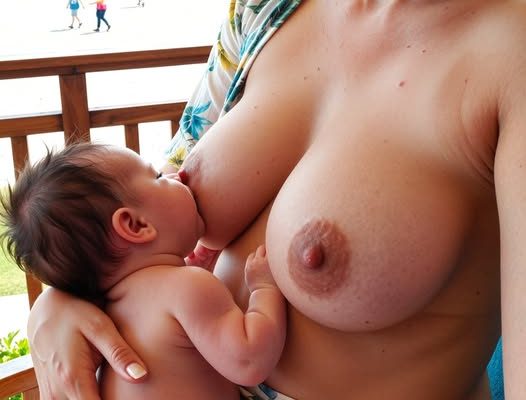5 Small Things Dads Do That Make a Huge Difference During Breastfeeding![]() Hand her a glass of water every time she starts feeding—hydration matters.
Hand her a glass of water every time she starts feeding—hydration matters.![]() Handle visitors and phone calls so she can feed in peace.
Handle visitors and phone calls so she can feed in peace.![]() Keep her feeding pillow, nursing pads, or burp cloths ready.
Keep her feeding pillow, nursing pads, or burp cloths ready.![]() Make sure she eats and rests between feeds.
Make sure she eats and rests between feeds.![]() Don’t shy away from talking about her boobs—it’s normal and part of parenting now.
Don’t shy away from talking about her boobs—it’s normal and part of parenting now.
Nipple and Breast Thrush: Everything You Need to Know 🦠👩🍼
Nipple and breast thrush is a common yet often misunderstood condition that affects breastfeeding mothers and their babies. It’s caused by an overgrowth of a yeast called Candida albicans 🧫—a fungus that naturally lives on our skin, mouth, gut, and other areas of the body. When the balance of bacteria and yeast is disturbed, this fungus can multiply and lead to a painful infection.
What Are the Symptoms? 🤕
Thrush on the nipples and breasts can be incredibly uncomfortable. Common signs include:
-
Burning or stinging pain in the nipple or deeper in the breast during or after feeds 🔥
-
Shiny or flaky skin on the nipples or areola 🩹
-
Itchy, red, or cracked nipples, often with no visible injury 🛑
-
Sudden nipple pain even if breastfeeding was previously pain-free
-
Pain that persists between feeds, not just during 🕐
Babies may also have oral thrush 👶, which appears as white patches inside the mouth, and they can pass it back and forth with the mother. If your baby has a diaper rash that won’t go away, it could also be linked to thrush.
What Causes It? 🔄
Several factors can lead to nipple and breast thrush:
-
Recent use of antibiotics (for mom or baby) 💊
-
A weakened immune system
-
Moisture and warmth in the breast area 🫗
-
Damage or cracking of the nipple skin
-
Baby’s oral thrush being transferred during feeding 👄🍼
Candida thrives in warm, damp areas, making nipples a perfect breeding ground—especially when pads or bras stay moist.
How Is It Treated? 🩺
Treatment involves addressing both mother and baby at the same time to prevent re-infection. Common treatment methods include:
-
Antifungal creams or ointments for the nipples (like miconazole or clotrimazole)
-
Oral antifungal medication for the baby (usually nystatin or fluconazole)
-
In severe cases, an oral antifungal may also be prescribed for the mother 💊
Good hygiene is crucial—wash hands frequently, sterilize pacifiers, and change nursing pads often.
Preventing Re-Infection 🚫
-
Change and wash breast pads regularly 🧼
-
Let nipples air dry after feeds
-
Boil or sterilize bottles, breast pump parts, and pacifiers daily 🍼🔥
-
Rinse nipples with salt water or vinegar-water solution after feeds (ask your provider for a safe recipe)
When to See a Doctor 👩⚕️
If nipple pain persists despite proper latch and positioning, or if you suspect you or your baby has thrush, don’t wait—consult your healthcare provider. The sooner you start treatment, the easier it is to manage.
Remember: You’re not alone. Thrush is frustrating, but it’s treatable and temporary. With proper care and patience, you’ll be back to comfortable, happy breastfeeding soon. 💗🍼



